Description
Balto – Dog Double Knee Brace – BT JUMP DUAL
WHAT IS IT FOR
Balto – Dog Double Knee Brace – BT-JUMP-DUAL has been designed for cases of bi-lateral cruciate ligament (ACL, CCL), luxation of the patella, knee joint conditions such as arthritis and arthrosis.
Ths dog knee brace can be used both as an alternative to surgery and in post-surgery.
BT-JUMP-DUAL is a kit composed of BT-JUMP braces: 1 x LEFT and 1 x RIGHT.
Please read the BT-JUMP page for full details.
WHY USING BT-JUMP-DUAL
- Bilateral knee conditions
- Old dogs (general degenerative process)
- Overweight dogs (High pressure on the good leg)
- Active dogs with a pronounced compensation behavior. The healthy hind leg is compensating for the injured hind leg that the dog is lifting while walking/running
BT JUMP has two pockets, which contain two angled splints that restrict the movement of the knee where necessary. An abdominal band ensures the dog knee brace is secured at the right height on the leg. An additional “Collar Link” is provided and can be used if needed in order to prevent the abdominal belt from sliding.
The brace can also be used without splints for conditions such as arthritis and arthrosis. This is because the compression it provides increases the blood pressure in the area, thus raising the temperature and reducing the pain caused by the conditions.
SIZES AND MEASUREMENTS
Important
Before proceeding with your purchase, please make sure you have taken the correct measurements on your dog as shown below.
If you have any doubt, please contact us by email and give measurements (A, H), weight and breed of your pet.
Then we will advice the best size of dog knee brace for your pet
Measurement A:
Measurement H:
BE AWARE:
Dogs with a sore leg for several days or weeks tend to develop a sore back and will round it to reduce the pain.
A round back will show a higher H value that the dog’s normal height.
A good massage on the back to relax it is also a great idea and they usually love it. If the back is still rounded then please measure H near the base of the tail or send us a picture of your dog with the tape next to him/her.

| Size | Circumference A | Height H |
Weight |
| XXS | 10-16cm / 3.9-6.3in | 20-26cm / 7.9-10.2in | 3-6kg / 6.6-13.2lb |
| XS | 16-19cm / 6.3-7.5in | 26-38cm / 10.2-15in | 5-10kg / 11-22lb |
| S | 21-26cm / 8.2-10.2in | 38-48cm / 15-18.9in | 10-20kg / 22-44lb |
| M | 26-31cm / 10.2-12.2in | 48-60cm / 18.9-23.6in | 15-30kg / 33-66lb |
| L | 29-38cm / 11.4-15in | 60-70cm / 23.6-27.5in | 28-45kg / 61.7-99.2lb |
| XL | 36-45cm / 14.2-17.7in | 68-78 cm / 26.7-30.7in | 45-62kg / 99.2-137lb |
EXAMPLE OF BREEDS
IMPORTANT
Please do not select the size of the brace based on the examples below.
You Need To Measure Your Dog.
- XXS (CATS and TINY DOG): Pomeranians, Chihuahuas
- XS (SMALL DOGS): Jack Russell, Shih Tzu
- S (MIDSIZE DOGS): Beagle, Cocker Spaniel, French Bulldog
- M (MEDIUM DOGS): Border Collie, Bulldog, Kelpie
- L (LARGE DOGS): German Shepherd, Labrador/Golden Retriever, Rottweiler, Doberman
- XL (GIANT DOGS): Bullmastiff, Great Dane, Large Rottweiler and Doberman…
POTENTIAL SIZE INCOMPATIBILITY
Our dog knee brace is designed for STANDARD LEG PROPORTIONS (size/shape).
All three measurements (A, H, Weight) must indicate the same size in the size chart.
If ANY of the measurements you took does not enter the same size category, the brace may not fit (e.g : dogs with short legs & large thighs). Should it be the case, please email us pictures for the measurements you took, the breed and weight of your dog : [email protected]. This will help us assess the way you took the measurements and recommend you the appropriate size to select.
Example: Bulldog, Bull Terrier, Westie, Cairn, Basset Hound, Corgi…
CHOOSE THE CORRECT SIDE
IMPORTANT
If you are standing behind the dog looking in the same direction, then the right leg is the one on your right.
For example, the dog in the main photograph above is wearing the brace on its RIGHT LEG.
THE NEED FOR RIGID SPLINTS IN A DOG KNEE BRACE
Ensuring the stability of the affected part often means aiding recovery.
The 2 angled lateral aluminium splints inserted in the sides of the BT-JUMP Dog Knee Brace restrict movement, as required, controlling the area which needs to be held still, while the abdominal belt keeps the support in place.
FITTING A BALTO DOG KNEE BRACE
Look at your brace and identify the abdominal belt, the collar link and the brace with its straps.
Find the patella or knee cap of your dog. The hole of the brace should be centered on the knee cap of your dog.
Note: It is easier to fit the brace if your dog is standing.
- Open the abdominal belt and close it around your dog’s belly. Tighten it just enough to help position the knee brace at the right level on the leg.
- Open all the straps of the brace and place the knee brace with the hole centered on the patella.
- Starting at the top, close one strap at a time. Please note that for small breeds (XXS and XS size) the brace has only one knee strap. Adjust the abdominal brace a bit tighter if needed.
- The dog should have its leg straight when sitting and lying down. If the brace slides down and the dog flexes its leg when sitting or lying down then it means it is too loose.
Note:
- If your dog tends to lift or drag its leg instead of bearing weight on it while walking, check the lowest strap near the hock. It may be too tight and be putting too much pressure on the tendon, therefore loosen slightly.
- For breeds with long hair, please bear in mind a clipping might be necessary in order for the brace to fit better.

RECOMMENDATIONS FOR USE
- During the period of restraint, it is advisable not to leave the dog alone for too long, because it might try to remove the brace by biting or scratching it
- Be careful of the band when applying the brace to a male dog. When wrapping the band around the pelvis, pass the band in front of foreskin in order to avoid compressing the urethra.
As your pet has the potential to damage the brace or injured themselves, we recommend supervision of your dog at all time when wearing the brace.
USEFUL INFORMATION
RECOMMENDED ACTIVITY LEVEL
Your pet is in a recovery period so he/she cannot do as much and as long as before their cruciate tear injury. The healing is slow and depends on the level of activity of your dog. Once the knee is stable (surgery or knee brace) the key to a full, strong recovery is to do as much exercise as possible to prevent muscle wastage but while avoiding pain and a flare-up.
Ideally, look for a canine rehabilitation practitioner with a CCRP or CCRT qualification. They will establish a specific protocol and home exercise program according to your dog’s specific needs and level of recovery.
The level of exercise needs to be progressive.
It is safe to start with slow walks on a short lead for 5 minutes twice a day (straight lines on flat ground is best) then increase the time and type of ground. For small breeds who like to speed up on 3 legs, walking on gravel will slow them down. Weight-shifting exercises are an easy way to remind your dog that they can trust their leg again.
While your dog is standing (brace ON), place your hands around her/his rear then gently push the bottom from left to right very slowly so your dog will have to put their weight on each leg, shifting their weight from side-to-side.
Hydrotherapy is fantastic but swimming is a very fast motion that could damage the joint if done too soon. Start with walking in water first. Please control the playtime with other dogs or yourself. We recommend that your dog does not jump or run for 1 to 3 months.
FACTORS ACTING ON HOW LONG TO USE THE KNEE BRACE
- The tear can be partial or total
- There is the possibility of other damage present in the leg (collateral ligament, meniscus injury, patella luxation, sprain/strain on the hip back or hock)
- The weight of your dog is another variable. Small breeds less than 10kg tend to improve faster than larger breeds or overweight dogs
STATISTICS WHEN USING BALTO DOG KNEE BRACE
The scar tissue that will stabilise the stifle needs 1 to 3 months to build up in order for the dog to walk without a brace. During this first period we advise you use the brace every time the dog is active. Remove it at night or when the dog is resting.
After this initial period the scar tissue needs another 6 months to consolidate and be strong enough to bear the full weight of an active (running, jumping, turning) pet without the brace. During this second phase, you can use the brace only during times of increased activity (e.g. in a dog park or on long walks)
- It is very common for a dog to develop a cruciate injury on the second leg after the first one. The BT-JUMP-DUAL dog knee brace has been designed to lower this risk especially with overweight and older dogs.
- Keep in mind that the brace provides a support externally so it is still possible for the dog to chew and scratch and you can remove it when you leave the dog alone.
- Like for any bandages, casts or braces, rubbing against the skin can happen. Please check twice a day the skin in contact with the brace. A rubbing area indicates a fitting issue. Review the strength of the straps and adapt the amount of time when your dog wears the brace to allow healing of the irritated skin.
- As your pet has the potential to damage the brace or injured themselves, we recommend supervision of your dog at all time when wearing the brace
ADAPTATION PERIOD
- Most dogs get used to the knee brace very easily within a few minutes or hours.
- If not then check the fitting again and help your dog with some exercises.
- The weight-shifting exercise described in the section above is ideal.
- Be sure to provide lots of treats and rewards when the dog is wearing the brace for encouragement.
- Start progressively, only wear the brace for 15 minute intervals to begin with, several times on the first day. Then increase this to 1h, then 2h 3-4 times a day the following days.
CARING FOR YOUR BALTO KNEE BRACE
If necessary, you can wash the brace gently by hand with soap and warm water (Less than 30dg Celcius | 86dg Fahrenheit).
Please make sure the brace is dry before fitting it on your dog in order to prevent infections.
SINGLE OR DUAL BRACE?
It is very common (50% to 80% of cases) for a dog with a damaged first cruciate ligament on one leg to damage the other one on the opposite hind leg during the immediate months to 2 years.
The Balto knee braces are designed so that 2 simple BT-JUMP knee braces on each side can be used together in a double knee brace. The BT-JUMP-DUAL dog knee brace.
The exception is the XXS size for smaller breeds as the BT-JUMP-XXS brace is too small to have an internal ring.
UNDERSTAND THE CRUTIATE INJURY AND TREATMENT OPTIONS:
WHAT IS A DOG CRUCIATE LIGAMENT INJURY?
The rupture of the cruciate ligament means that the knee joint of your pet is unstable. The instability is triggered each time the dog bears weight on the leg. In the short term the injury is painful and can be swollen, then a lack of activity leads to muscle wastage (atrophy). Within the time frame of a few months to a few years the long term consequences of this instability is the onset of osteoarthritis.
BALTO KNEE BRACE AS AN ALTERNATIVE TREATMENT TO ACL SURGERY
Your veterinarian can perform surgery and place an internal support (tie rope or screws and plate) to stabilise the knee joint. The knee braces can also bring an external support to settle the joint instability. This is the reason why the BT-JUMP dog knee brace features two splints inserted into a comfortable, padded fabric to provide real support.
BALTO KNEE BRACE AS SUPPORT FOR POST SURGERY
After any stifle surgery on your dog (such as tie rope technique, TTO, TTA, TPLO, D’Angelis, Extra-capsular imbrication technique, luxating patella surgery, Tibial Crest Transposition), the knee is painful and swollen from the implant stabilizing the knee joint. The first 2-3 weeks are delicate and even though the joint is stable, over-activity of your pet could damage the corrective work of the surgery. Some dogs will be easy to manage and some may become restless confined and / or limited to restricted activity. For those canine patients that become too energetic, the use of a knee brace will help support and protect the surgery site.
The brace is then not used all the time but only when you are unable to restrain the activity level of your dog.
Learn More about all the treatment options for a dog cruciate ligament injury
UNDERSTAND LUXATING PATELLA AND TREATMENT OPTIONS
As explained in this video, the Balto dog knee brace is not an alternative to the patella surgical treatment and it is only a temporary solution to support the knee until a surgery can be organized.


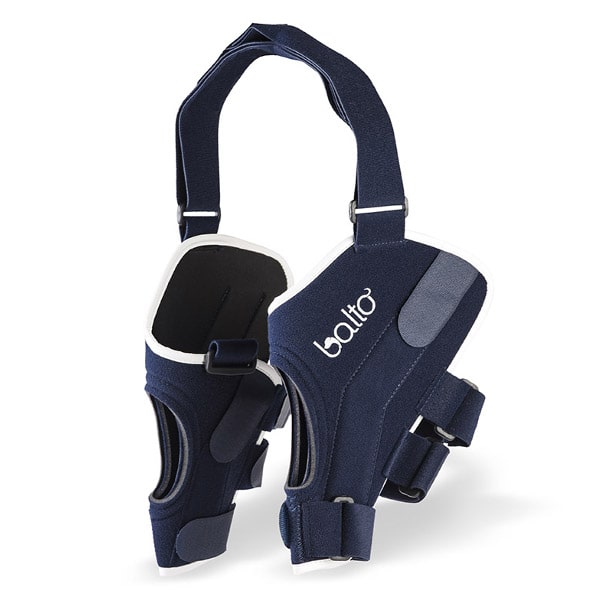


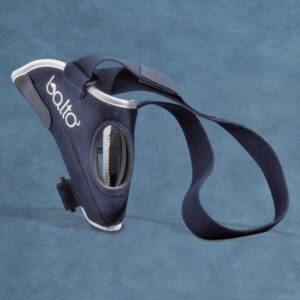
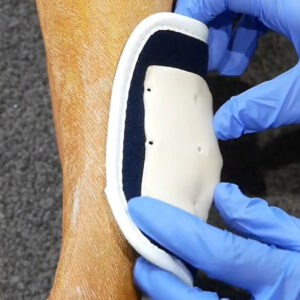


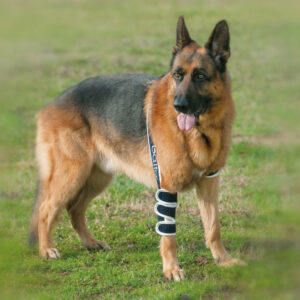
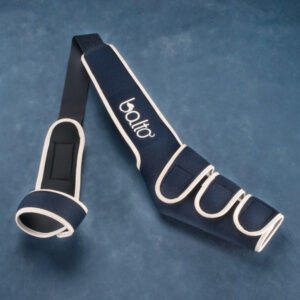
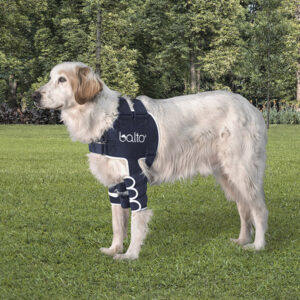
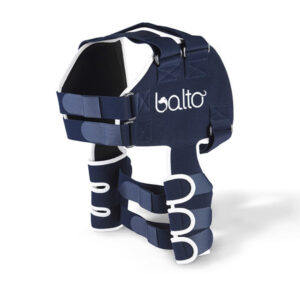
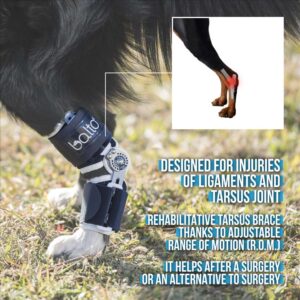
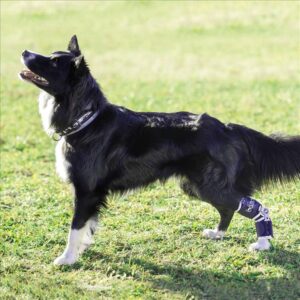
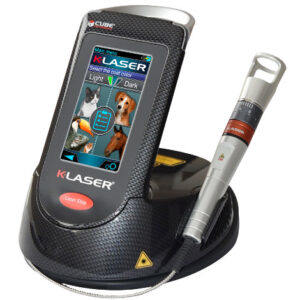

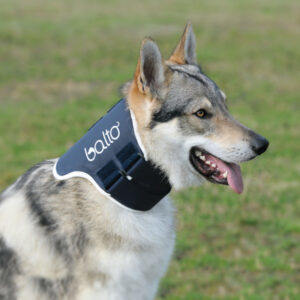
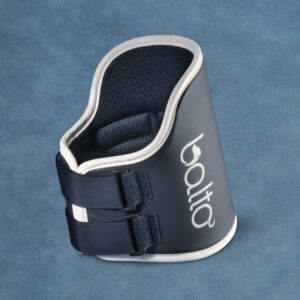
Susanne Oswald –
Lilly is 8 1/2yrs old.
She is a Siberian Husky X about 3 yrs ago she snapped her left Cruciate Ligament and had surgery to repair that, whilst recovering from that surgery she damaged her Luxating Patella in her left leg and required surgery.8 months later she snapped her right Cruciate Ligament and required more surgery.
As we live on the Gold Coast walking on the beach is one of Lilly’s favorite things to do however because of the damage to her Patella this activity would often see her lame for a couple of days. I purchased the leg brace in an effort to give her left knee the stability to enable her to still be able to enjoy her beach walks/runs. It has been the best thing for her, no more lameness I would recommend the brace to anyone in the same situation.
Warm Regards.
Sue.
Kate –
Thank you so much I can’t believe that my order was ready to pick-up today in Sydney. I really appreciate the quick turn around!
Thanks and have a great weekend.
Kate.
Barbara –
We got the brace last night. Already our 14-year-old poodle is putting some weight on her injured leg. It is gratifying to see her regaining some mobility and we look forward to her continued improvement as she becomes accustomed to the brace. Thank you for an effective and affordable product!
Barbara
Regina –
Hello Alfred,
I would like to thank you for taking the time to make sure it was the right fitting for my dog. Minks is using it and it seems to really support his leg.
Again thank you,
Regina
Karin Marie Mansfield –
Hello…I’m Soya an twelve year old Westie. Two years ago I severed both my ACL’s. I’m very active. First my left ACL tore. Mom looked at every brace she could find on the internet. One nice man offering a $2,000+ metal brace which required VERY precise measurements (we are in France The very nice man with expensive brace was in the US) suggested I try a Balto brace which did not require such precise measurements. He said it was a good brace.
Mom contacted Alpha Mobility and spoke with a very nice man named Marc. During the two weeks when we were going to the vet for more exrays etc. the ACL completely tore. Marc told us that the brace may not fit a Westie as we are very stocky little people. Mom ordered the brace for the left leg. When it arrived we understood that the brace was really not intended for a short dog with stocky legs. The only issue was the velcro strap was not long enough to go aroung my upper thigh. No problem – Mom found a strip of velcro and just added a piece to the existing strap. Perfect.
THe brace hooked nicely to my Puppia harness.
THEN….the right ACL completely tore. We ordered a brace for the other leg. It came quickly in the mail. I wore these every day….all day. My walks now were in a dog stroller. Mom carried me up and down the stairs. I could slowly wander around the house wearing my double brace. I had some time outs in a huge mesh enclosure when Mom left the house. My two month check up: the vet was VERY impressed. My ACL’s had healed. I still wore the brace and could go for short walks on a leash for the next six weeks. Then my brace was taken off….
It’s been two years now. Mom does not throw the ball often for me anymore but I go to the park or the beach everyday. I’m not allowed to chase seagulls. NO surgery. We are so very grateful to Alpha Mobility.
Jessica Russell (verified owner) –
Quick delivery and a quality product